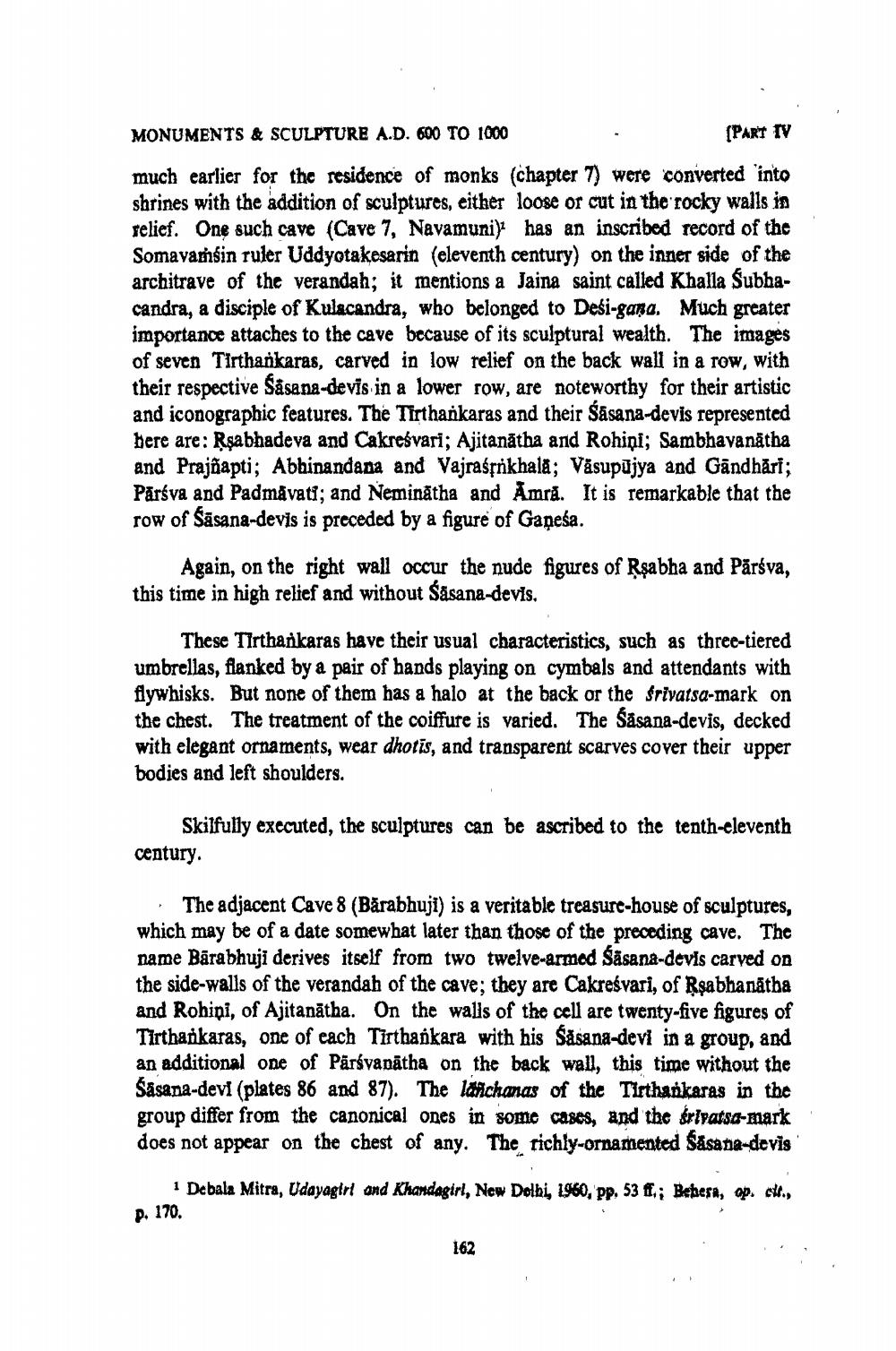________________
MONUMENTS & SCULPTURE A.D. 600 TO 1000
(PART TV
much earlier for the residence of monks (chapter 7) were converted into shrines with the addition of sculptures, either loose or cut in the rocky walls in relief. One such cave (Cave 7, Navamuni) has an inscribed record of the Somavamsin ruler Uddyotakesarin (eleventh century) on the inner side of the architrave of the verandah; it mentions a Jaina saint called Khalla Subhacandra, a disciple of Kulacandra, who belonged to Desi-gang. Much greater importance attaches to the cave because of its sculptural wealth. The images of seven Tirthankaras, carved in low relief on the back wall in a row, with their respective Sásana-devis in a lower row, are noteworthy for their artistic and iconographic features. The Tirthankaras and their Sasana-devis represented here are: Rsabhadeva and Cakreśvari; Ajitanātha and Rohini; Sambhavanätha and Prajāapti; Abhinandana and Vajraśnkhala; Väsupujya and Gāndhāri; Pārsva and Padmavati; and Neminātha and Amrå. It is remarkable that the row of Sāsana-devis is preceded by a figure of Gaņeśa.
Again, on the right wall occur the nude figures of Rşabha and Pārsva, this time in high relief and without Så
These Tirthankaras have their usual characteristics, such as three-tiered umbrellas, flanked by a pair of hands playing on cymbals and attendants with flywhisks. But none of them has a halo at the back or the Srivatsa-mark on the chest. The treatment of the coiffure is varied. The Såsana-devis, decked with elegant ornaments, wear dhotīs, and transparent scarves cover their upper bodies and left shoulders.
Skilfully executed, the sculptures can be ascribed to the tenth-eleventh century.
The adjacent Cave 8 (Bärabhuji) is a veritable treasure-house of sculptures, which may be of a date somewhat later than those of the preceding cave. The name Bārabhuji derives itself from two twelve-armed Säsana-devis carved on the side-walls of the verandah of the cave; they are Cakreśvari, of Rsabhanātha and Rohini, of Ajitanātha. On the walls of the cell are twenty-five figures of Tirthankaras, one of each Tirthankara with his Sasana-devi in a group, and an additional one of Pärávanātha on the back wall, this time without the Sasana-devi (plates 86 and 87). The larichanas of the Tirthankaras in the group differ from the canonical ones in some cases, and the fripatsa-mark does not appear on the chest of any. The richly-ornamented Sasana-devis
1 Debala Mitra, Udayagirt and Khandagirl, New Dolhi, 1960, pp. 53 ff.; Bebesa, op. cit.,
p. 170.
162




